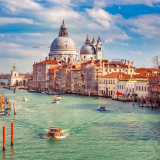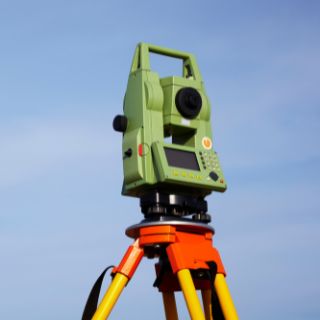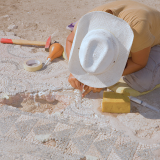Charter for the preservation of Quebec's heritage
Deschambault DeclarationAdopted by the Conseil des monuments et des sites du Québec,ICOMOS Canada French-Speaking Committee, April 1982.
1. WHY THE CHARTER?
The postwar period has witnessed the worldwide spread of various currents of thought that seem to adjust people's way of living to new socio- economic conditions, and to criticize the consequences of industrialization, of urbanization on a massive scale, of progress at all costs, and of the consumer society. Whether extreme or moderate, these ideologies have helped to make people aware of certain human values that merited preservation. These things of value include the architectural, artistic or simply material remains that our predecessors have bequeathed us.
The basic principles of heritage preservation were set forth in the
Venice International Charter of 1964, which was signed by experts from many countries. The aim of this charter was to regulate and promote efforts to safeguard national heritages. Subsequently, at Amsterdam and Nairobi this initial undertaking was further developed by the addition of other basic principles that expressed an increased desire not only to pass on an accumulated heritage, but also to broaden the concept of heritage itself. Henceforth, people wanted to ensure the preservation of all aspects of national heritage.
This movement began to have a noticeable influence on Quebec from 1960 on. The Quebec government's first action in this field was to create a Ministry of Cultural Affairs which made it possible to pass the Cultural Properties Act in 1972. At that moment our heritage acquired value in the eyes of the law. However, even before this Act was passed, the community had organized itself into groups that differed in structure, but shared a common desire to become involved in safeguarding their environment and culture, and to develop strategies that would make the different levels of government aware of the issue.
This individual and collective commitment resulted in significant achievements in the areas of preservation, stimulation of community participation and development. Whether through municipal, provincial or federal programs, large-scale projects or more modest actions, the people of Quebec have shown that they are interested in their heritage and are determined to revive it.
The Conseil des monuments et sites du Québec offers this charter in support of these efforts. The Charter is intended as an orientation guide, a reference tool, a remedy and above all a code of ethics that we should adopt in dealing with our heritage. While this charter draws upon previous experience and on international currents of thought, the principles of preservation and development it contains may be applied by all individuals and organizations that are concerned with the protection of the natural, cultural and historical aspects of the Quebec heritage.
The first aim of this charter, which has been specifically drafted for Quebec, is to try to identify our cultural personality, and thereby define the special nature of our heritage. Secondly, the charter seeks to encourage people to think before they act; and finally, it proposes a framework for action that is positive and objective, that provides incentive, and that takes into account both the particular problems of Quebec and contemporary doctrines of heritage development.
2. THE QUEBEC CULTURAL CONTEXT
The experience of Quebec is similar to that of other nations in that the specific character of its culture has been determined by its history which has taken place in a particular environment. The main features of this environment are a harsh climate, a vast territory, the relatively recent establishment of a North American civilization that is European in origin, the French fact, Catholicism and a particular pattern of human settlement.
Wrested from the American Indians who were its original inhabitants, Quebec became first a French, then a British colony, and finally a part of the Canadian confederation. Quebec's political history has been marked by the struggle to preserve its French and Catholic roots on a North American continent where the majority of the population is and has been English-speaking.
Nevertheless, a variety of elements has contributed to the development of our social fabric. In the course of time, immigrants from different places have been added to the amalgam of the three peoples who originally fought over the territory of Quebec. Sometimes immigration occurred all at once, as in the case of the Loyalists and the Irish; and sometimes it was spread over time, as happened with the Italians and the Chinese. Little by little, the immigrant phenomenon has altered the physiognomy and mentality of Quebec's population.
Our material heritage has been marked not only by this mixture of cultural traits, but also by certain fashions that have had international currency. Of these, the Victorian influence is certainly the most important, but we also find traces of Art Nouveau, the skyscraper era and many other esthetic or technological vogues.
Economic life, that mainspring of societies, has probably had the greatest impact on the distribution of Quebec's population. From the very beginning, more or less densely populated communities were concentrated in areas that had acquired importance because of the fur trade. Seigniorial estates and English townships provided the framework for the development of agriculture. Many elements of our society were drawn northward by the forest products and mining industries. Finally, the spectacular growth of the United States had repercussions of the utmost importance on our economic model and our way of life: massive urbanization, high rate of consumption, establishment of large industrial centres and development of means of transportation for natural, human and energy resources.
Many other factors have contributed to the shaping of our image. The preponderance of Catholicism prompted the proliferation of churches and convents and gave rise to an art that was centered on the sacred. The rigors of the climate forced people to make adaptations in every aspect of their way of life. As for the distribution of population, it was for the most part determined by the waterways of the St. Lawrence basin.
It would be pointless to offer here an exhaustive list of all the geographic, social, historical and economic factors that have contributed to the development of our cultural fabric. Suffice it to say that this ferment of ideas, habits and customs, taking place as it did in a particular geographic context, has given rise to traditions, a folklore, a mentality, ways of doing things, and architecture, a social structure and, in sum, an art of living that is uniquely Quebecois. Though the elements that make up this culture have not all been integrated to the same degree, nor in the same way, their importance cannot be doubted. They constitute our heritage, which is nourished and strengthened by the past, and continues to flourish in the lives of the present generations. We cannot allow this dynamic growth to be cut off from its roots.
3. THE SITUATION TODAY
We felt the need to publish this charter because all too often our heritage is threatened, when it is not forgotten or destroyed. This problem, of course, is not peculiar to Quebec. Modernization and the pursuit of new lifestyles have, in fact, relentlessly imperiled national heritages everywhere. Such is the price of progress!
In Quebec, the great distances between population centres and the immensity of the territory have led to a more or less integrated development. All these factors have been unfavorable to the preservation of our national heritage. Consequently, we must show greater vigilance, enhance dialogue and consultation, and do more to mobilize the forces of the community.
The climate is also, at times, a menace to our architectural heritage and to the remains of former times. Frost, especially combined with thawing, has a serious effect on buildings in Quebec. Rapid and technologically competent action is necessary in this area.
Finally, our European and North American cultural heritage is threatened by a danger that is less perceptible but no less real than the others. Because this culture is of recent origin and only extends over a short span of time, it would be inappropriate to rely solely on chronological classification to determine the relative value of its different elements. One should not, for example, attribute greater value to the remains of the 18th century than to those of the 19th. Of course, the older things are, the rarer and more valuable they generally are; however, one must use subtlety in judging these matters.
DEFINITION OF HERITAGE AND PRESERVATION
Heritage is defined as "the combined creations and products of nature and man, in their entirety, that make up the environment in which we live in space and time.
Heritage is a reality, a possession of the community, and a rich inheritance that may be passed on, which invites our recognition and our participation."
(Quebec Association for the Interpretation of the National Heritage, Committee on Terminology, July 1980).
The concept of heritage as defined above is intended to cover much more than buildings erected in a more or less distant past. Neither in the past nor in the future is heritage limited in time. We use the heritage of yesterday to build the heritage of tomorrow, for culture is by its very nature dynamic and is constantly being renewed and enriched.
Heritage, in our view, is a very comprehensive term that includes three major entities: material culture (cultural properties) and the geographic and human environments. People are, of course, most familiar with the concept of cultural properties since these are defined by law. We should remember, however, that in addition to formal and popular architecture, these properties include all other forms of material evidence, such as archaeological and ethnographical objects, iconography, written archives, furniture, art objects and, in sum, the whole of the material environment in which we live. The geographical environment is nature as it manifests itself on the territory of Quebec in coast, mountain and plain. We wish to insist above all on the great importance of our landscapes and our natural sites, which have a unique esthetic and/or panoramic value. And let us note, finally, that the people in their environment, who have their own customs and traditions, whose memory is furnished with a particular folklore, and whose way of living is adapted to this specific setting, are a human and social treasure that also requires protection.
This broad definition of our national heritage includes, then, all the elements of our civilization, as they exist not only individually but also as components of larger historical, cultural and traditional unities or, to put it in simpler terms, as examples of man's adaptation to his environment. This concept of heritage includes the idea of a cultural landscape which may be defined as the result of the interaction of human society and nature.
Preservation of the national heritage may be viewed, in this light, as that combination of study, expertise and physical intervention which aims at conserving every element of this heritage in the best possible condition. This activity involves proper maintenance, consolidation, repair, safeguarding and restoration, to prevent the deterioration and, at worst, the destruction of the national heritage.
Article I
THE CITIZENS OF QUEBEC ARE THE FOREMOST PROTECTORS OF THE NATIONAL HERITAGE
Article I-A
The citizens of Quebec have, in the first place, an individual responsibility to protect their heritage. They must do all they can to appreciate its value, to strive to understand its full significance, and to contribute to its preservation.
Article I-B
This individual responsibility must also find expression in every decision that is made on behalf of the community, whether by elected representatives or by corporate or institutional managers.
Article II
THE NATIONAL HERITAGE IS A TREASURE THAT BELONGS TO THE COMMUNITY. IT IS PRECIOUS AND NON-RENEWABLE
Article II-A
The national heritage must be preserved, safeguarded and developed for the benefit of present and future generations. This treasure does not belong to us; it has been entrusted to us so we may pass it on to others. We must ensure its proper use and conservation.
Article II-B
All the laws and regulations as well as the fiscal, financial and administrative mechanisms in their entirety must further the preservation and development of the national heritage. This action must start at the municipal level, for the municipalities are the primary legal representatives of the community.
Article II-C
The national heritage must remain in the possession of the people of Quebec, and it must be recognized that cultural properties belong in their place of origin.
Article II-D
The greatest possible attention must be paid to authenticity in preserving and developing the national heritage, and in passing it on to future generations. When only certain elements of this heritage remain, these must be treated as integral wholes. Any action taken must be comprehensible and reversible.
Article III
KNOWLEDGE OF THE NATIONAL HERITAGE IS AN ESSENTIAL PREREQUISITE FOR ITS PRESERVATION
Article III-A
All the appropriate means for acquiring this knowledge must be provided. In particular, we must have up-to-date inventories and the specialized expertise that is required before any action can be taken.
Article IV
THE NATIONAL HERITAGE MUST ENJOY PUBLIC AND UNCONDITIONAL RECOGNITION
Article IV-A
Interdisciplinary teams must assess the cultural, historical, natural, social and esthetic importance of our heritage on the national, regional and local levels.
Article IV-B
Respect must be shown for the significant contribution of every historical period.
Article V
THE PRESERVATION OF THE NATIONAL HERITAGE REQUIRES MAINTENANCE, PROTECTION AND DEVELOPMENT
Article V-A
Protection of our national heritage must be ensured, in the first place, by ongoing maintenance.
Article V-B
The development of cultural properties is of essential importance. This development includes all measures that serve to make them accessible and useful, and that, if necessary, make it possible to reintroduce them into the daily life of the people of Quebec.
Article V-C
Every action to preserve the national heritage should be designed to conserve as much as possible of the original, and to avoid reconstruction based on conjecture.
Article V-D
The development of cultural properties should be followed up by the dissemination of that practical knowledge that is required for passing on these properties to future generations and ensuring their permanent protection.
Article VI
THE NATIONAL HERITAGE MUST BE GIVEN PRIORITY IN ALL AREAS
Article VI-A
Legislation affecting the national heritage must take precedence over all other legislation.
Article VI-B
The principles of protection and development of the national heritage must have primacy in all development plans.
Article VI-C
When the importance, for our heritage, of a building or group of buildings or landscapes has been recognized, these must take precedence over the rest of the environment. This consideration must be a decisive factor in any alteration of that environment, and the adaption, integration and respect of the heritage material must be ensured.
Article VI-D
Any contemporary additions, which must be creative works in their own right, have to be integrated and harmonized with the surrounding context in regard to tonality, texture, proportions, pattern of filled and empty spaces, and overall composition.
It must not be forgotten that an archaeological analysis of all ground where new construction is planned is absolutely essential, to uncover the earlier remains of construction and habitation and, where necessary, to examine the possibilities of conservation in site.
Article VII
THE PUBLIC HAS A LEGITIMATE RIGHT TO PARTICIPATE IN ANY DECISION IN REGARD TO ACTIONS TO PRESERVE THE NATIONAL HERITAGE
Article VII-A
At all times, those who may become involved in actions to preserve our heritage have a responsibility to disseminate information on that heritage, to implement procedures ensuring the circulation of ideas, to further community participation, and to promote the preservation of our heritage.
Article VII-B
When the national heritage is affected by a particular action, those responsible for that action must consult with the citizens and inform them of the scope of that action.
Documents relating to such actions must be made available to the public and must be prepared in such a way that non-specialists can understand them.
Furthermore, those involved in furthering these actions must develop adequate consultation procedures in order to take note of the opinions of the public. Such procedures will, in particular, include public hearings, information sessions and exhibitions.
Article VIII
THE REVIVAL OF OUR HERITAGE MUST BE COMPATIBLE WITH THE MAINTENANCE, AND EVEN THE IMPROVEMENT, OF ITS SPECIFIC IDENTITY, INTEGRITY AND CULTURAL VALUES
Article VIII-A
Our heritage must be employed in such a way as to maintain or introduce functions that are useful to society and that are compatible with the structure and nature of the buildings, spaces and sites of which it is made up. In using our heritage, we must show consideration for its integration into the economic and social activities of the surrounding community.
Article VIII-B
We must promote the continuous use of our heritage, without any interruption of occupation.
Article VIII-C
Whenever we decide to make new use of heritage material, we must ensure the preservation of all the important characteristics of that material.
Any changes that are made must, at all times, be reversible.
Article VIII-D
The selection of a new function for heritage material must avoid excessive use and the deterioration that would result from such use.
Article IX
THE PRESERVATION OF THE DYNAMIC AND FUNCTIONAL CHARACTER OF OUR HERITAGE IS ENSURED BY LOCAL RESIDENTS WHO ARE AN INTEGRAL PART OF THAT HERITAGE AND CONTRIBUTE TO ITS PROTECTION AND ITS VITALITY
Article IX-A
In using our heritage, we must preserve or reintroduce everyday life rather than the artificial life of museums and tourist centres. Preference should be given to traditional occupations; and we must, in any case, respect the needs and legitimate aspirations of the inhabitants, even if this requires us to adopt uses that are different from the original uses.
Article IX-B
In other words, it is necessary to encourage respect for the established rights of the local population. The housing function should take precedence over all other uses and be given first priority.
Article X
OUR EDUCATIONAL INSTITUTIONS MUST PROMOTE THE IDEA THAT EVERYONE HAS TO TAKE RESPONSIBILITY FOR PRESERVING THE NATIONAL HERITAGE
Article X-A
Our educational system must disseminate knowledge pertaining to our heritage, to make people aware of its value and of the need to preserve it.
Article X-B
The educational system must ensure that traditions are passed on, and thereby encourage the training of artisans, technicians and professionals who will be able to work to safeguard our heritage.
Article X-C
Other educational authorities (the family, newspapers and magazines, radio and TV, etc.) must also do their part in furthering heritage education. In particular, heritage practitioners and specialists increase awareness through the communication of their knowledge to the general public.
Inquiries to: canada@icomos.org
ICOMOS Canada
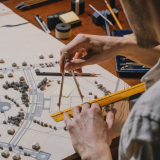 Architectural heritage
Architectural heritage Cultural landscapes
Cultural landscapes Cultural routes
Cultural routes Cultural tourism
Cultural tourism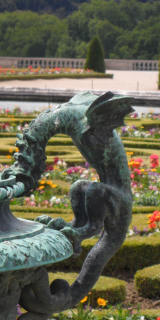 Historic cities, towns, villages and gardens
Historic cities, towns, villages and gardens Industrial heritage
Industrial heritage Military heritage
Military heritage Mural paintings
Mural paintings Polar heritage
Polar heritage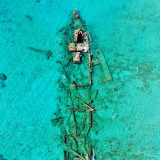 Underwater cultural heritage
Underwater cultural heritage Vernacular architecture
Vernacular architecture Wood
Wood

